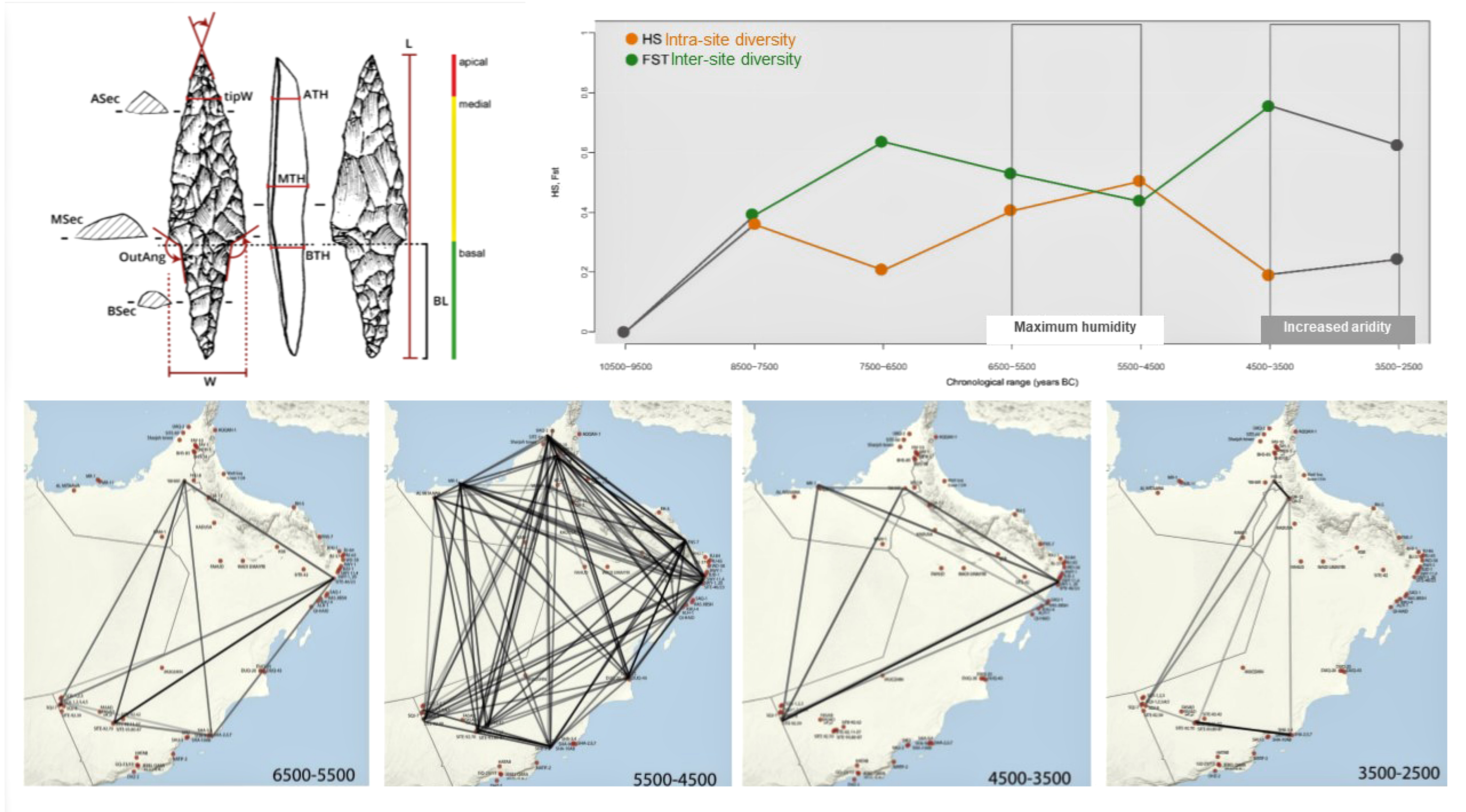The Dark Ages of Arabian Neolithic
Lithic production and cultural change in Oman across time and space (7500-6500 BCE, 3700-2000 BCE)
Inner Oman (Southeastern Arabia) is a semi- to hyper-arid region, where the rocky environment of the Hajar Mountains piedmont gradually transitions into the world's largest sand desert, the Rub al-Khali. Humans have occupied the region almost uninterruptedly, despite two specific periods – the “Dark Ages of Omani Prehistory” – for which only scant archaeological evidence has been found. These two periods are the Late Paleolithic/Early Neolithic (8500-6500 BC) and the Late Neolithic/Early Bronze Age (3700-2000 BC) transitions. As critical periods for developing new adaptation systems and cultural transformation (i.e., new technologies and subsistence strategies), these two phases are virtually defined by the beginning and the end of the Holocene Humid Phase (ca. 6500-4000 BC). During the Humid Phase, the most favorable climatic conditions favored the spread of complex lithic technologies for game hunting (and possibly warfare), as well as for fishing activities, together with the first forms of herding.
|
|
However, there is a contingent scarcity of documented stratified sites and absolute dating in innermost Oman. Currently, it is unclear whether this scarcity in archaeological findings is linked to actual population decrease and fewer sites, or if it can be ascribed to lower research intensity in the Omani hinterland (Figure 1). The project aims, then, to analyze lithic assemblages from these two main periods of cultural and environmental transformation. It investigates the interplay between change and cultural transmission processes in lithic industries using a multi-scale methodological to study the assemblages from three inner Omani case studies:
- Wilayat Al-Mudhaibi,
- Duqm hinterland,
- Maitan area,
and their relationship with coastal sites.
|
|
Examining stone tools from transitional periods – and their peculiarities – contributes to central archeological themes, such as technological changes, craft specialization and exchange systems. By combining the technological study with the quantitative analysis of lithic industries from these periods of major change, this research produces a novel classification of the lithic industries from the Late Paleolithic/Early Neolithic and Late Neolithic/Early Bronze Age transitions. Moreover, this is the first typo-technological and quantitative study of lithics entirely dedicated to assemblages from Oman's remote, inner, and vastly unexplored areas.
 |
Preliminary results will undoubtedly raise new questions within the archaeological community, both during fieldwork and subsequent study that will result from the collaboration with German (Tubingen University), French (INRAP, CNRS), Omani (Earth Sciences Consultancy Centre), Italian (Sapienza University of Rome), Czech (Czech Academy of Sciences) teams and labs. In addition to the amount of evidence that we expect to generate, this dataset will offer a generalizable and reproducible tool for future studies on lithic manufacturing and, to a greater extent, on cultural evolution, past land-use strategies and resilience in arid and hyper-arid archaeological contexts.
Contact person: Dr. Maria Pia Maiorano




